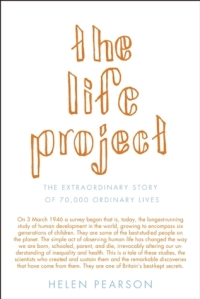
5*s
A book that captured me from the first page where we meet Olivia Sweetman making her way to address all two hundred guests gathered at The Hunterian Museum, Royal College of Surgeons in London. All those people are amongst the jars of organs to celebrate the publication of historian Olivia Sweetman’s book, Annabel, a study of a Victorian woman who became one of the first surgeons, a woman who also had a sensational personal life too, captured within Annabel in her own words.
After the celebrations the book switches to the run up to the publication of the book, eventually as far back as when Olivia first saw Annabel’s diary in Ileford Manor in Sussex in the hands of Vivian, the housekeeper cum research assistant that Olivia would come to depend on as she juggled her television appearances as a celebratory historian, her marriage to David, busy writing and researching his own book, and her three children Dom, Paul and Jess.
I adored every word of this book, there is always something absolutely irresistible in a book about a book after all, but The Night Visitor has taken this kernel and added the most memorable characters, a plot that is underpinned by meticulous timing so that I became bound up in Olivia’s fight for her reputation long before I understood why she was needing to fight in the first place.
Adding to the history we also hear about beetles, more specifically the dung-beetles that Olivia Sweetman’s father studied, hence that eye-catching cover.
‘Your eye for detail, your doggedness, you’re just remarkable,’ she said, looking into my eyes. Hers really are a striking colour. At that moment they reminded me of a beetle called, Necrophilia formosa, whose iridescent carapace is somewhere between violet and royal blue and which feeds on beautiful flowers that reek powerfully of rotting fish.
So we have Olivia the modern woman juggling life and making her mark studying a woman who was forging ahead in a man’s world in the Victorian times, and we have Vivian, who outshines them both with her strangeness, her adherence to strict routines, her sharp mind which is at odds with her position as a housekeeper but most of all a character who is oh so very believable. When reading the chapters narrated by Vivian, we hear from the two women in turn throughout the book, I was strongly reminded of some of the wonderful creations of Ruth Rendell who created equally dislikeable but fascinating characters.
Olivia has Vivian in her life as a necessary evil, she looks down on the woman who she depends on to give her access to Annabel’s diary, to do the tiring leg-work during the research into this woman’s life and while she is grateful for all her hard-work, her doggedness and attention to detail, once the book is edited, she finds her relentless appeals to write another book difficult to shut down. This struggle between the needy and the needed while trying to maintain the smooth politeness that society demands that makes the entire story so believable.
Whilst the plotting is superb it is definitely the characters that lead this novel and even the bit parts are wonderfully drawn giving you a real sense of the describer and described in broad brush strokes
I do remember how grim I felt as I sat behind Maureen’s desk, unreasonably infuriated by her ‘Smile! It’s gin o’clock!’ sticker on the till and her ‘Keep Calm, It’s Only a Royal Baby’ coaster. I was fighting the urge to rip both objects up and put them in the bin. I have known Maureen since childhood, we were in the same class at primary school and she has always irritated me. She is intrusive, bossy and rather dim.
The Night Visitor will hopefully not haunt me in the way that she haunted Vivian, but these characters, the intricate storyline full of fascinating detail will stay with me for a long time to come. I can safely predict this will be one of my books of 2017.
I’d like to say a huge thank you to Quercus who provided me with a copy of The Night Visitor. This review is my unbiased thanks to them.
First Published UK: 4 May 2017
Publisher: Quercus
No of Pages: 368
Genre: Psychological Suspense
Amazon UK
Amazon US






